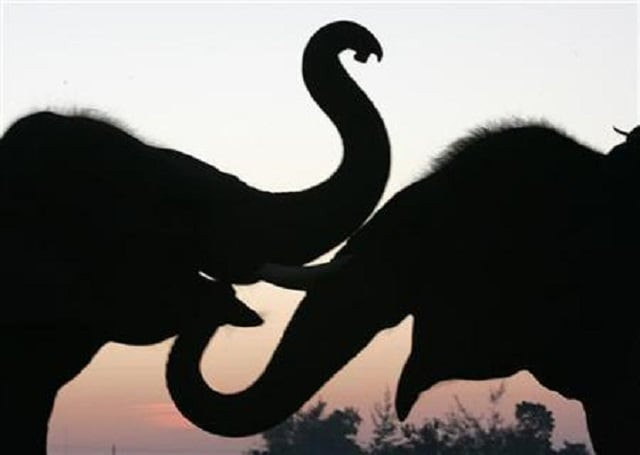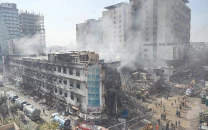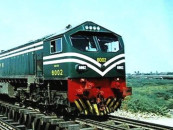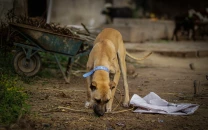Tourists rescued by elephants from flooded Nepal safari park
Relief workers said 26 of Nepal's 75 districts were either submerged or hit by landslides after heavy rains

PHOTO: REUTERS
Thailand leads the pack for Asia's abused tourist elephants
In Sauraha, 80 km (50 miles) south of Kathmandu, the Rapti River overflowed its banks, inundating hotels and restaurants and stranding some 600 tourists. Sauraha, on the fringe of Chitwan National Park, is home to 605 greater one-horned rhinoceroses, or Indian rhinoceroses, and is popular with foreign tourists, including Indian and Chinese visitors, mainly for elephant ride and rhino-watching.
"Some 300 guests were rescued on elephant backs and tractor trailers to (nearby) Bharatpur yesterday and the rest will be taken to safer places today," Suman Ghimire, chief of a group of Sauraha hotel owners, said by telephone on Monday. Shiva Raj Bhatta of WWF Nepal said one rhino had died in the floods. Relief workers said 26 of Nepal's 75 districts were either submerged or hit by landslides after heavy rains lashed the mainly mountainous nation, home to Mount Everest and the birthplace of Lord Buddha.
The death toll, which had stood at 49 on Sunday, was expected to rise with another 50 people reported missing in the floods and landslides, Information and Communications Minister Mohan Bahadur Basnet said. Basnet said more than 60,000 homes were under water, mainly in the southern plains bordering India. Estimates of losses were not available, with rescuers yet to reach villages marooned by the worst floods in recent years.
Bilateral ties: Nepal seeks investment opportunities in Pakistan
"The situation is worrying as tens of thousands of people have been hit," Basnet told Reuters. Large swaths of farmland in the southern plains, Nepal’s breadbasket, are under water and the Himalayan country could face food shortages due to crop losses, aid workers said.
"The heavy rains hit at one of the worst times, shortly after farmers planted their rice crop in the country’s most important agricultural region," said Sumnima Shrestha, a spokesperson for US-based non-profit group Heifer International. Monsoon rains, which start in June and continue through September, are important for farm-dependent Nepal, but they also cause heavy loss of life and property damage each year.



















COMMENTS
Comments are moderated and generally will be posted if they are on-topic and not abusive.
For more information, please see our Comments FAQ